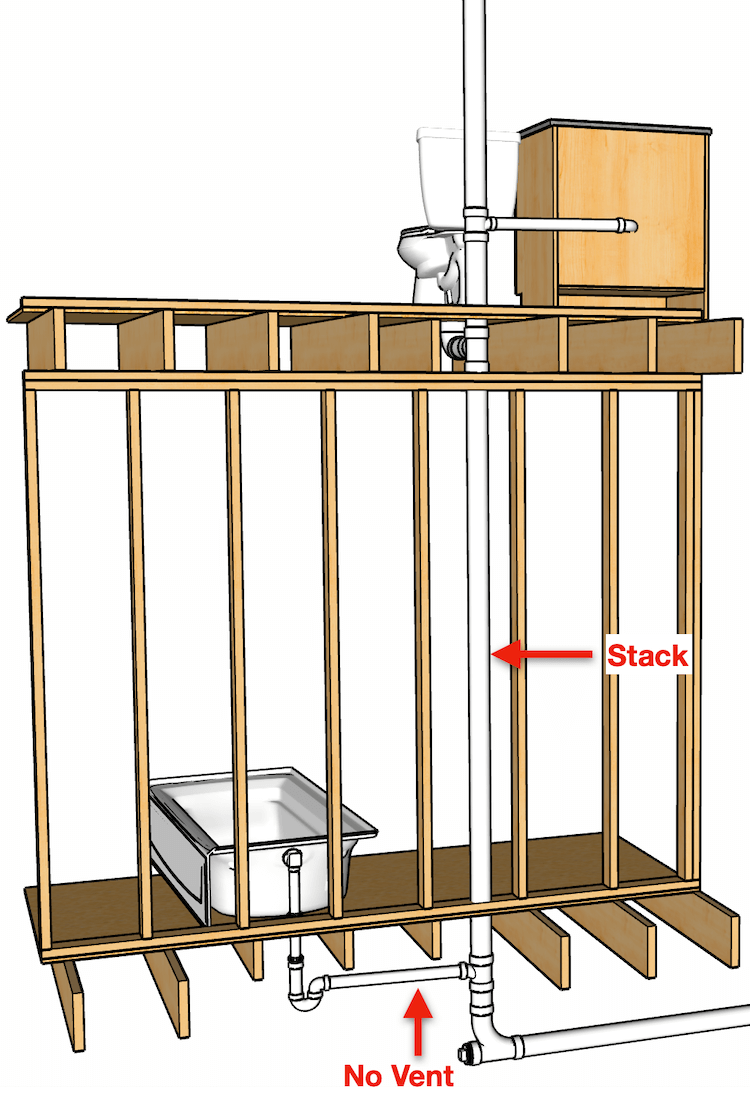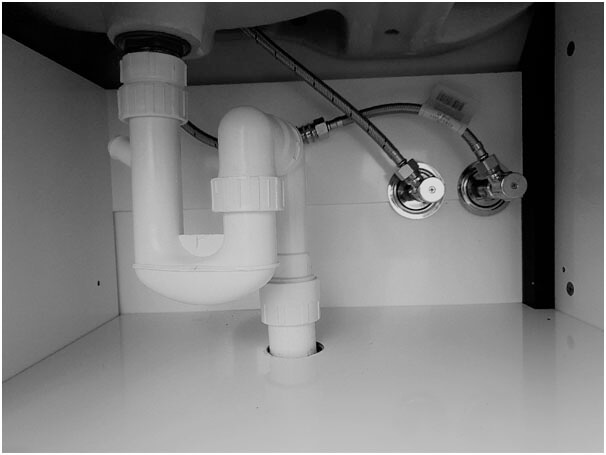The Necessity of Correct Ventilation in Residential Plumbing Systems
The Necessity of Correct Ventilation in Residential Plumbing Systems
Blog Article
How do you really feel on the subject of Why Plumbing Air Vents Are Important?

Correct air flow in pipes systems is often neglected, yet it is vital for maintaining the performance and safety and security of your home's plumbing. Ventilation aids control air pressure, protect against the accumulation of dangerous gases, and ensure the efficient removal of waste. In this overview, we will explore the significance of appropriate pipes ventilation, just how it works, and the benefits it gives your pipes system.
Exactly How Ventilation Works in Plumbing Systems
Atmospheric Pressure Regulation
Correct ventilation maintains well balanced atmospheric pressure within the pipes system. When water flows with pipes, it displaces air. Without appropriate ventilation, this variation can create negative stress, bring about slow drains pipes or siphoning of water from catches, which can create unpleasant odors to seep right into the home.
Protecting Against Drain Gas Build-up
One of one of the most essential functions of pipes vents is to stop sewer gases, such as methane and hydrogen sulfide, from collecting within the home. These gases can position serious health and wellness risks and are highly combustible. Vent pipes enable these gases to run away safely outside.
Aiding in Waste Removal
Air flow aids in the effective removal of wastewater by protecting against airlocks in the drain system. When air can flow openly through the vents, it permits water and waste to flow efficiently with the pipelines, lowering the threat of obstructions and back-ups.
Benefits of Proper Ventilation
Enhanced System Effectiveness
Correctly ventilated plumbing systems operate much more efficiently, with less clogs, faster draining, and much less pressure on the pipes. This effectiveness extends the life-span of the plumbing system.
Improved Air Quality
By avoiding sewage system gases from entering your home, proper air flow adds to much better indoor air quality, making your living setting healthier and extra comfy.
Preventing Water Damage
Ample air flow assists avoid water from being siphoned out of traps, which can lead to drain gases getting in the home and creating water damage over time.
Actions to Ensure Proper Air Flow
Consulting Plumbing Codes
Constantly consult regional pipes codes when developing or customizing your plumbing system. These codes provide the needed guidelines for correct airing vent and guarantee your system fulfills safety and security requirements.
Normal Assessment and Upkeep
Normal inspections can aid recognize prospective air flow concerns prior to they become significant problems. Upkeep jobs, such as cleaning vent pipelines and checking for obstructions, are crucial for keeping the system in good working order.
Specialist Installment
For brand-new setups or significant alterations, it's a good idea to employ an expert plumbing professional. They have the expertise to make sure the air flow system is appropriately designed and set up according to code.
Recognizing Air Flow in Pipes
Ventilation in plumbing describes the network of pipes that enable air to move with the drain system. These vents serve numerous objectives, including managing air pressure within the pipelines, stopping sewer gases from getting in the home, and aiding in the smooth flow of wastewater.
Kinds Of Pipes Vents
Key Stack Vent
The primary stack air vent, also referred to as the air vent pile, is the main vent in a plumbing system. It expands from the main drainpipe align with the roofing system, allowing gases to leave and fresh air to enter the system.
Branch Vent
Branch vents connect to the main pile air vent and serve individual components, such as sinks, bathrooms, and showers. These vents make certain that each component has adequate ventilation to operate effectively.
Air Admittance Valve (AAV).
An Air Admission Valve (AAV) is a one-way shutoff that allows air to enter the plumbing system without the requirement for a traditional air vent pipe extending via the roof covering. AAVs are generally used in remodellings or locations where installing a conventional air vent is unwise.
Indications of Poor Air Flow in Pipes.
Slow Draining Fixtures.
If your sinks, bathtubs, or commodes are draining gradually, it could be an indicator of poor ventilation. Insufficient air flow can create a vacuum result, making it challenging for water to drain correctly.
Gurgling Seems.
Gurgling sounds coming from drains are often a result of air being sucked via water catches as a result of unfavorable pressure in the pipes. This is a clear sign of insufficient air flow.
Undesirable Smells.
Drain smells inside your home are a red flag that your plumbing system is not correctly aerated. This might imply that sewage system gases are not being sufficiently vented outside, resulting in possibly dangerous problems.
Usual Ventilation Blunders.
Poor Vent Sizing.
Utilizing undersized vent pipes can result in inadequate air flow and pressure discrepancies in the system. It's essential to use vents that fulfill the certain requirements of your pipes system.
Improper Vent Placement.
Positioning vents as well much from the fixtures they offer can lower their efficiency. Correct positioning guarantees that air can stream openly and effectively with the system.
Disregarding Code Requirements.
Building ordinance provide specific standards for plumbing air flow. Ignoring these codes can lead to a system that falls short to operate appropriately and may cause pricey fixings or carcinogen.
Conclusion.
Proper air flow is a crucial part of any pipes system, guaranteeing that it functions successfully and securely. By comprehending the relevance of air flow, acknowledging the indications of poor ventilation, and taking actions to keep your system, you can stop expensive problems and secure your home's air top quality.
4 Things You Should Know About Your Plumbing Vents
What Plumbing Vents Are
Also called a vent stack, a plumbing vent is a vertical pipe attached to your drain line that runs through your roof. The plumbing vent pipe, or plumbing air vent, removes gas and odors from your plumbing system and allows fresh air to enter the pipes, helping the water to flow out of the drain pipes.
What Plumbing Vents Do
Plumbing vents have two basic functions. One of which is to allow unpleasant smelling wastewater and sewer gasses to escape your plumbing system instead of entering your home. Plumbing vent pipes are typically located on roofs, away from windows, to ensure the fumes exit the home completely.
The other function of the plumbing vent is to move fresh air into your plumbing system. This helps move water through every plumbing fixture in your house, like toilets and sink drains. Think of the way in which you need to let a little air into the bottle as you pour soda in order to make the drink flow smoothly.
Different Types of Plumbing Vents
True vent: This is the most common vent option. In simplest terms, a true vent is a vertical pipe attached to your drain line that exits through the roof. They often function as the main vent that other fixtures can connect to. Re-vent pipe or auxiliary vent: Attached to the drain line near specific plumbing fixtures, re-vent pipes run up and over to connect to the main vent. Common vent: Two plumbing fixtures installed on opposite sides of a wall are typically tied into the vent stack using something known as a sanitary cross. Wet vent: This venting option operates as a drain pipe and a vent at the same time. Wet vent drainage systems drain water from one fixture while venting the air from another. Although they’ve been used for over 100 years, wet vent systems have only recently been added to the plumbing code in many areas. If you’re planning on installing one in a bathroom remodel, make sure you check your local code prior to construction. Loop vent: For free-standing fixtures like kitchen island sinks, loop vents are ideal. These vent pipes run under the floor, rise from the P-trap, and create a loop inside the cabinet sink. Air admittance valve: An AAV is a one-way mechanical valve typically installed at the site of the plumbing fixture. AAVs allow venting to occur without having to tie into a larger venting system. They’re ideal for venting fixtures where you aren’t able to easily connect to an existing vent system. Common Plumbing Vent Issues
Although vent pipes typically don’t have water flowing through them, they’re still subject to many typical plumbing issues. For example, clogs are one of the most common problems associated with sewer vent pipes. If your vent pipe gets clogged, all of your plumbing fixtures tied into the vent stack will be affected.
A sink with a slow drain that bubbles and gurgles or a strong sewage smell around your toilet are both indicators that your toilet vent pipe is clogged. Because most vent pipes exit through the roof, old leaves, twigs or even a bird’s nest could be clogging the pipe.
Clogs in your vent pipe system cause a buildup of negative pressure, meaning that water won’t be able to flow out of your home very well. It’s similar to putting your finger over the opening of a straw to trap water inside. When you remove your finger, the water is able to flow out of the straw.
If you suspect you have any blockage in your vent, make sure you have a professional come examine the situation. Left unchecked, a blocked air vent can lead to other costly repairs, like leaks and sediment buildup.
Under Pressure
Pipe vents are essential aspects of a home’s plumbing system. Owning a home means learning about all sorts of things you never put much thought into before. But by understanding as much as you can about the important systems of your home, you can keep those budgets intact and those anxiety levels low.
https://www.homeserve.com/en-us/blog/home-improvement/plumbing-vents/

Do you enjoy reading about What Is A Plumbing Vent & How Do They Work?? Leave a remark down the page. We will be pleased to hear your opinions about this posting. In hopes that you come back again later on. Make sure you set aside a second to share this entry if you enjoyed it. Thank-you for your time spent reading it.
Call Today Report this page